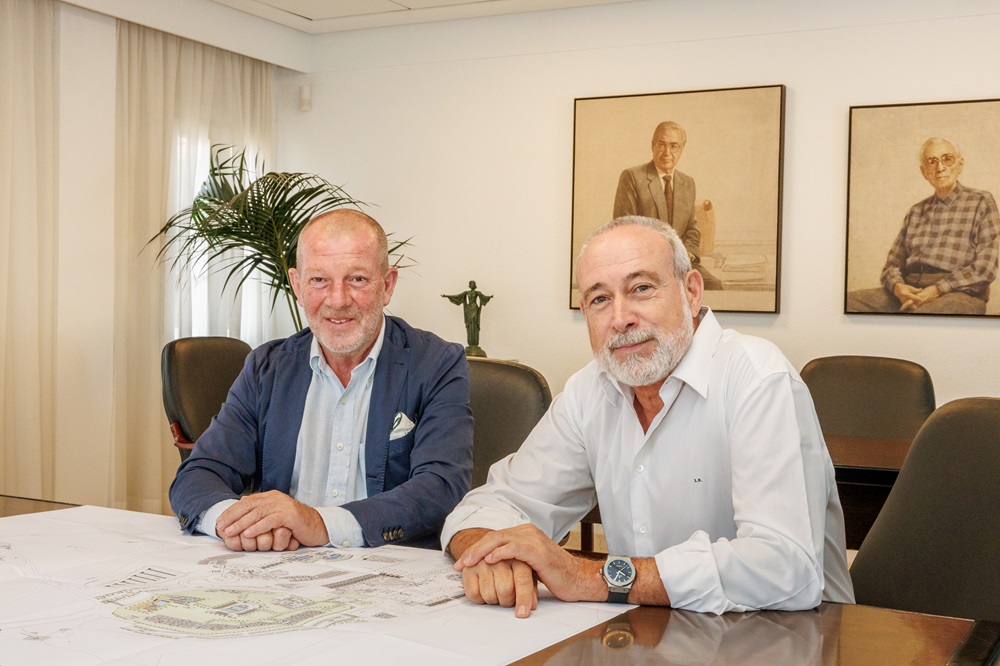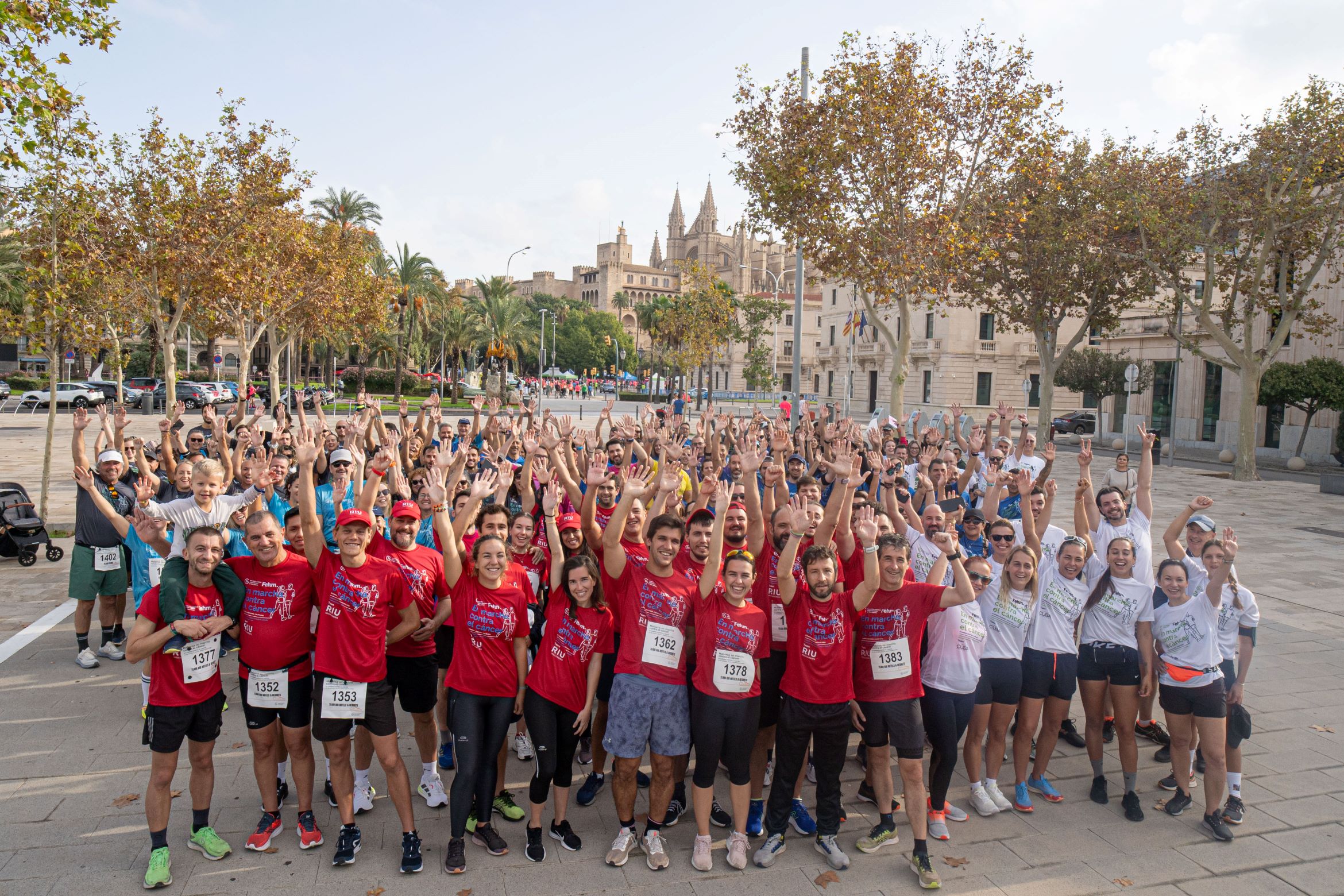Luis Riu: “Sanchís is the man who brought military precision to RIU’s construction projects”
12 November, 2024When José María Sanchís joined the Spanish Navy to train as a mechanic, never in his wildest dreams did he imagine that one day he’d have a career in the tourism industry. He’s been my go-to man on the ground since 1991 when he joined the RIU team to bring some military precision to our construction department after working on the Riu Taino kitchen installations in Punta Cana. More than 30 years later, he continues to lead an area that has grown exponentially in terms of destinations, projects, staff and sophistication. He was a lifeline during the shortages and difficulties I faced in my younger years in Punta Cana, and today he’s still my eyes and ears on projects in America, from Toronto to Costa Rica.
It was my mother—Doña Pili, as everyone working on the project called her—who noticed Sanchís. She said, “this guy works well and knows how to manage teams, don’t let him get away because you could really use him here in Punta Cana”. He’s always had a lot of charisma. I remember thinking he looked like Tintin the explorer on the worksite, with his cap, shorts and boots with long socks. At that time he worked for Adisa and came to Punta Cana to assemble the furniture and extraction system for the kitchens during the construction of the hotel Riu Taino. When he’d finished the job, I spoke to him and asked if he’d like to come and work for RIU. “I was really keen on the offer”, says Sanchís, “first of all because I was going through a divorce at the time, and secondly because the job was much more attractive than what I was doing. So, I went back to Barcelona where Adisa was based, handed in my notice and returned to the Dominican Republic”.
Building RIU’s new hotels in the Americas: a big challenge for Sanchís
We worked a lot during those years. We opened a new hotel every 15 to 18 months and faced a lot of difficulties. Machinery was hard to come by and fuel, cement and iron were in short supply. The roads were in such a bad state that it took ages to get anywhere and sometimes the worksite would be brought to a stop for days when containers didn’t arrive, or if a lorry or front loader broke down and there were no spare parts to fix them. I told Sanchís that I’d give him 15 days to see how everything worked and then tell me what needed to be fixed, and that’s exactly what he did. “Before I joined, I also had an interview with Don Luis senior. I told him about my military background and he replied that it was exactly what he was looking for”, recalls Sanchís.
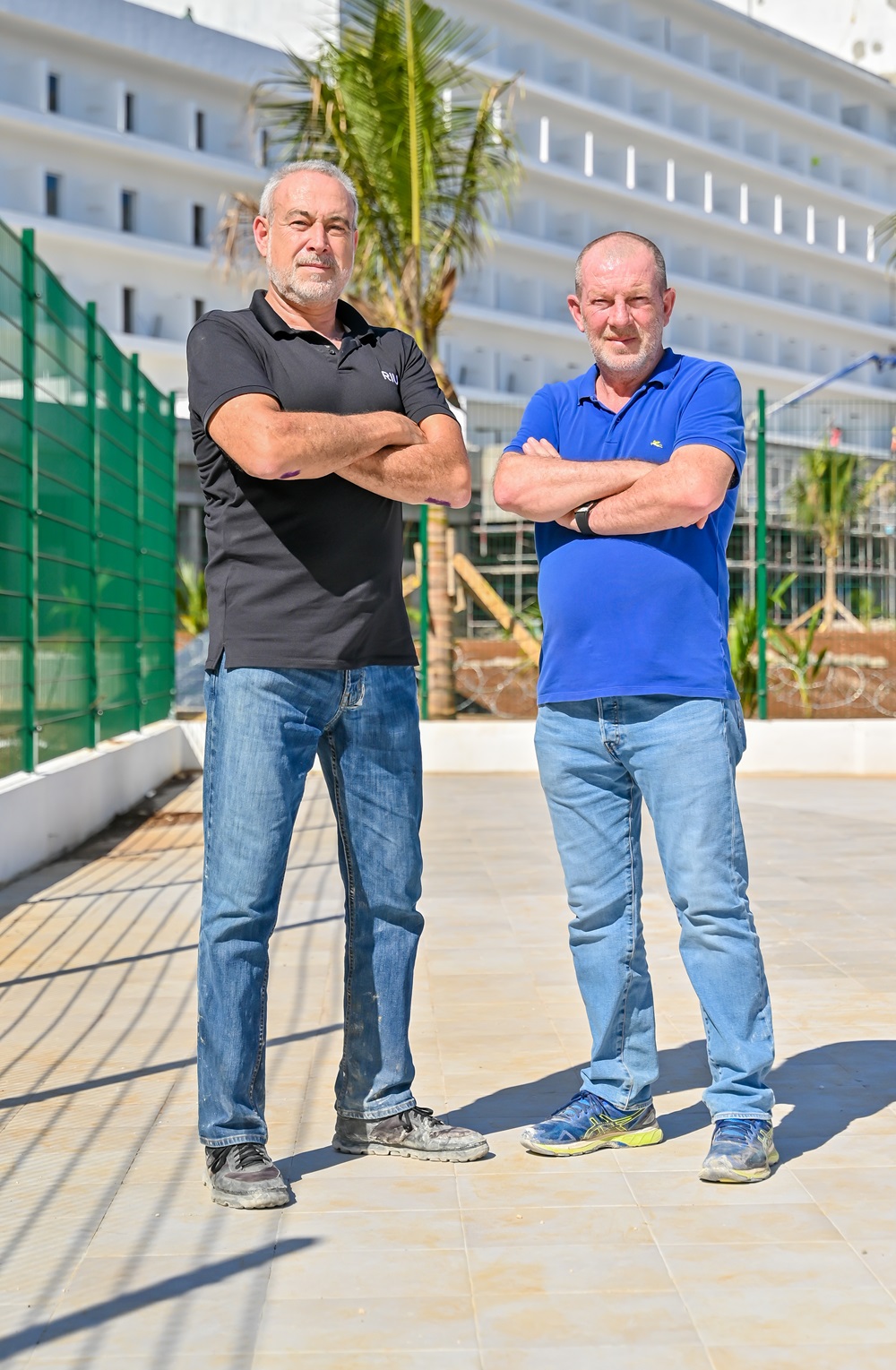
1. Organisation of rest days and payroll
He brought military organisation to our operations. One of the first measures he took was to change the workers’ rest days and payday. When he started working for RIU, we paid the labourers every two weeks. They received their salary on Friday and were then off until Monday, “but lots of them didn’t have time to go home and get back in time, so I changed it to monthly payment followed by a week off so they all had time to go home, rest and get back to work”, explains Sanchís, recalling one of the first decisions he made that had a major impact on the organisation.
2. Replacing a proprietary workshop with rental solutions
“I wanted to run the project like a construction company. As soon as we could, we started renting machines instead of buying them. Owning machines was a constant source of problems. On top of having to hire operators and take out insurance, you had to have your own workshop and fuel and spare parts were always hard to come by, not to mention that many people were out to pull one over on us”, Sanchís explains, looking back over those years.
I couldn’t agree more. The workshop was an absolute nightmare. We had to order the parts form Miami and even the spare tyres we bought somehow got “lost” along the way. All the stress of that workshop really took its toll on us. We felt absolutely helpless. It was horrible to know we were being cheated but there was absolutely nothing we could do about it, so when Sanchís decided to get rid of it, it was a huge relief.
3. Travelling by horseback on the worksite
The worksite was absolutely enormous and at first we had to walk everywhere. Then we bought mopeds but ended up using horses because there wasn’t enough fuel.
4. Solutions for solving the scarce supply of cement
Another major problem was the scarce cement supply. Demand was so high at that time in the Dominican Republic that if we sent a trailer to go and fetch some cement, the return journey could take up to 10 days because of the queues and how long it took to get there. And then you had to pray that the lorry wouldn’t break down along the way or have an accident and roll over. We also made our own blocks with aggregates that we bought in San Cristóbal, and that was also a 10 to 12-hour drive to buy the materials. We eventually stopped doing this because of how long it took, staffing issues, and the complexity of the process. The last blocks we made ourselves were used for the hotel Riu Bambu, which opened in 1999.
From the navy to installing kitchens to managing RIU’s construction department
José María Sanchís was born in Bocairent, Valencia, in 1962. When he finished school at 18, he wanted to go to university but his family couldn’t afford the tuition fees, so he decided to join the Spanish Navy so he could continue his studies. He was there for eight years, five of which he spent on a Spanish Navy submarine. It was there that he received his mechanical and, of course, military training, which he has since applied to his work. After leaving the Navy, he spent three years working for Adisa, the Barcelona-based company that RIU commissioned to fit the kitchens at the Riu Taino. The rest, as they say, is Riu history.
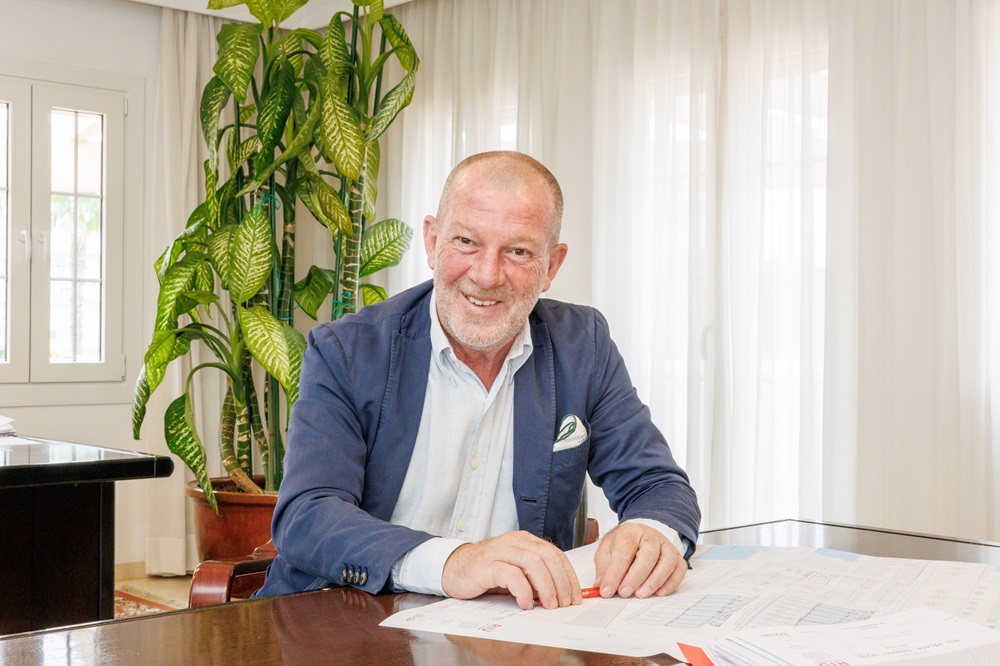
Sanchís began at the Riu Taino, Riu Naiboa and the Riu Palace Macao in Punta Cana, before travelling to more and more destinations: first to Puerto Plata, also in the Dominican Republic, and then jumping to Cuba, Orlando, Jamaica and, of course, Mexico. “I remember that first trip to the Yucatan with Pedro Ros, Isabel and Luis. After the first hotel, RIU’s expansion in Mexico really took off, starting with the hotels in Playa del Carmen, followed by Cancun, Vallarta, Los Cabos, Mazatlan… we have many great memories and partners in Mexico”, says Sanchís.
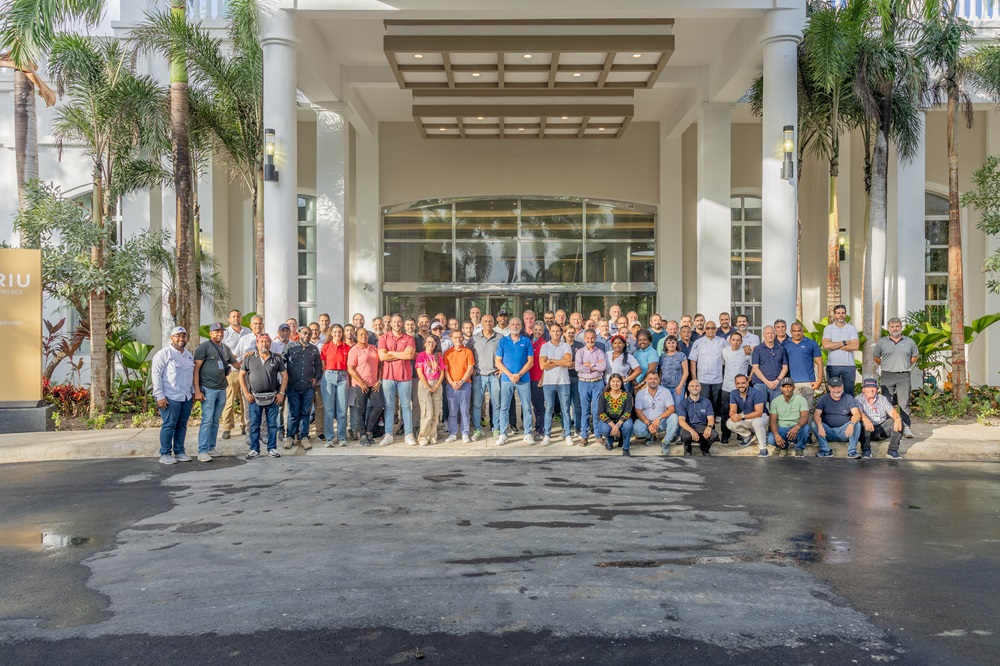
Sanchís played an essential role on the worksite. Before he joined RIU, we had an architect, foremen and technicians, but I needed someone to manage and coordinate them all. Someone with the necessary leadership and organisation skills, but who also had the mechanical and technical expertise to supervise the project, understand the various processes and needs and create teams with the experience and knowledge to get the job done.
“Every project, a new mission”: from the Caribbean and Mexico to North America
José María says he hasn’t got a favourite hotel or project. “They’re all very similar in a lot of ways, but each has its own particularities that make it unique. I honestly couldn’t pick a favourite. I really like working in Mexico because we have stable teams. They’ve been with us for many years and that makes things so much easier, for example, the architect Eduardo Vadillo, who is very good and can strike the perfect balance between RIU’s demands and daily work on site, or Xochitl Crespo. Doña Pilar was very fond of her”, says Sanchís. Indeed, my mother told me, “Luis, don’t let Xochitl get away, she’s very good”. She does an excellent job and takes a lot of work off housekeeping’s hands when the rooms are passed on to them, and that’s key to opening on schedule.
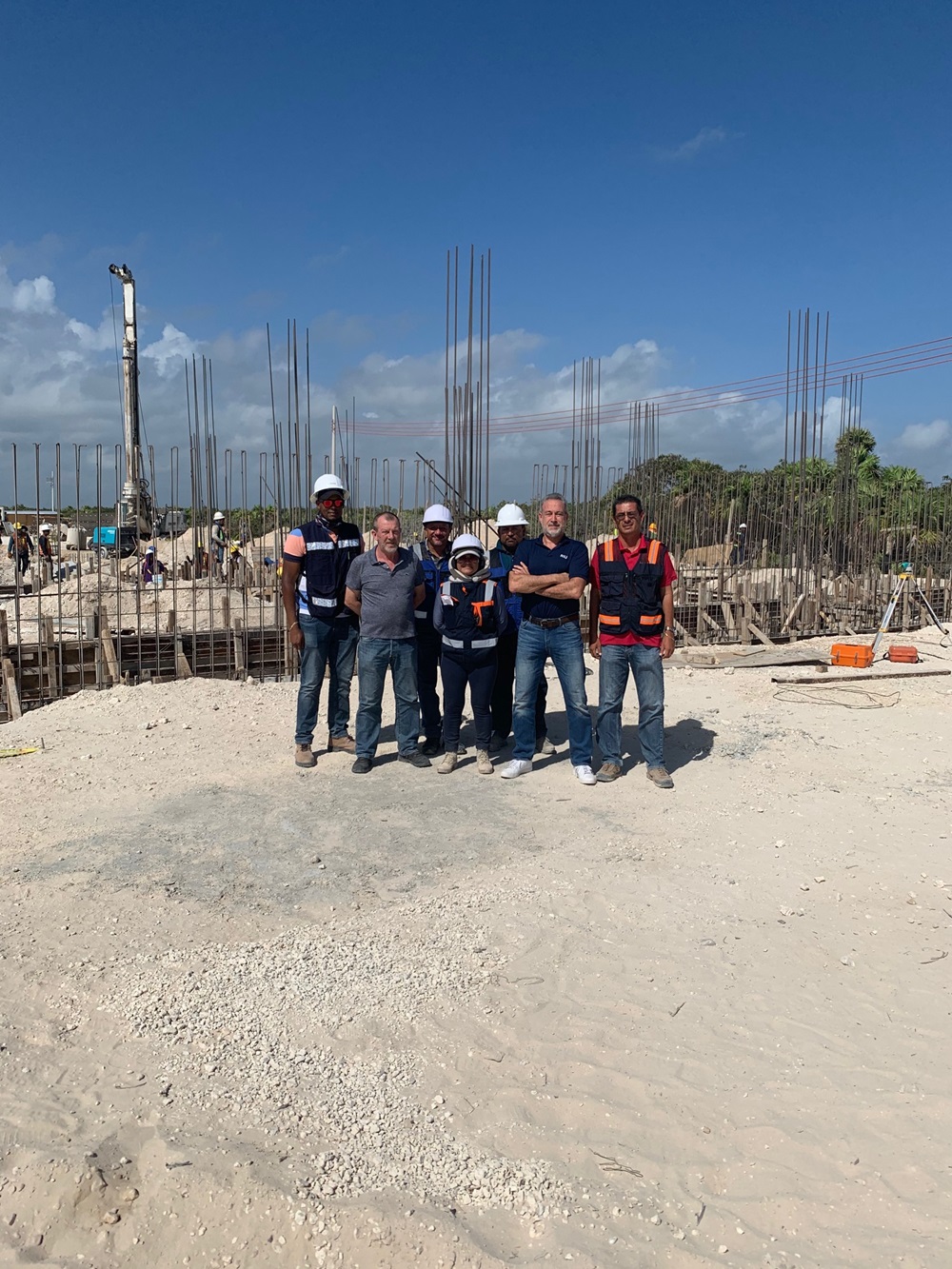
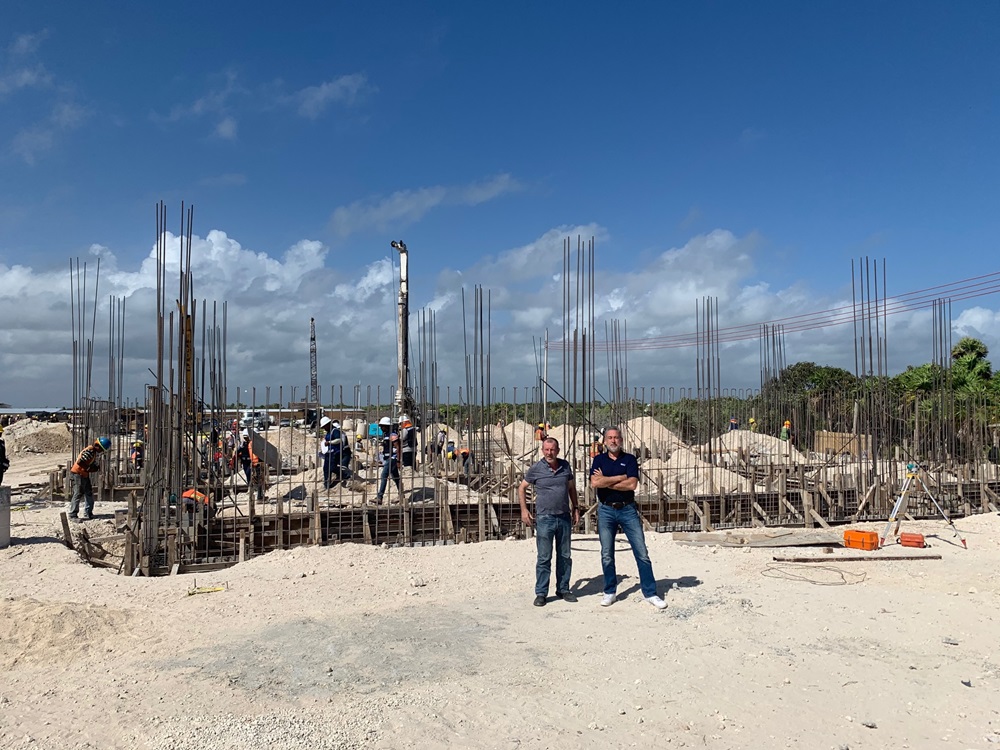
“I haven’t got a favourite hotel because each project is a new mission and my task is to open on time and make sure everything goes smoothly, avoiding any surprises and difficulties that come up along the way, which is always the case”, says José María.
Of course, he is right. We don’t have to look any further than the opening of our first hotel in New York. The bureaucracy and red tape caught us all off guard as it was so different from our familiar territory of Spanish-speaking beach destinations. “Fortunately we have the engineer Jaime Palmer, who with his technical knowledge, language skills and stiff upper lip helped us get our head around and navigate Anglo-Saxon paperwork and timelines”, recalls Sanchís gratefully. Jaime played a key role not only in New York, but also in London, Chicago and Toronto.
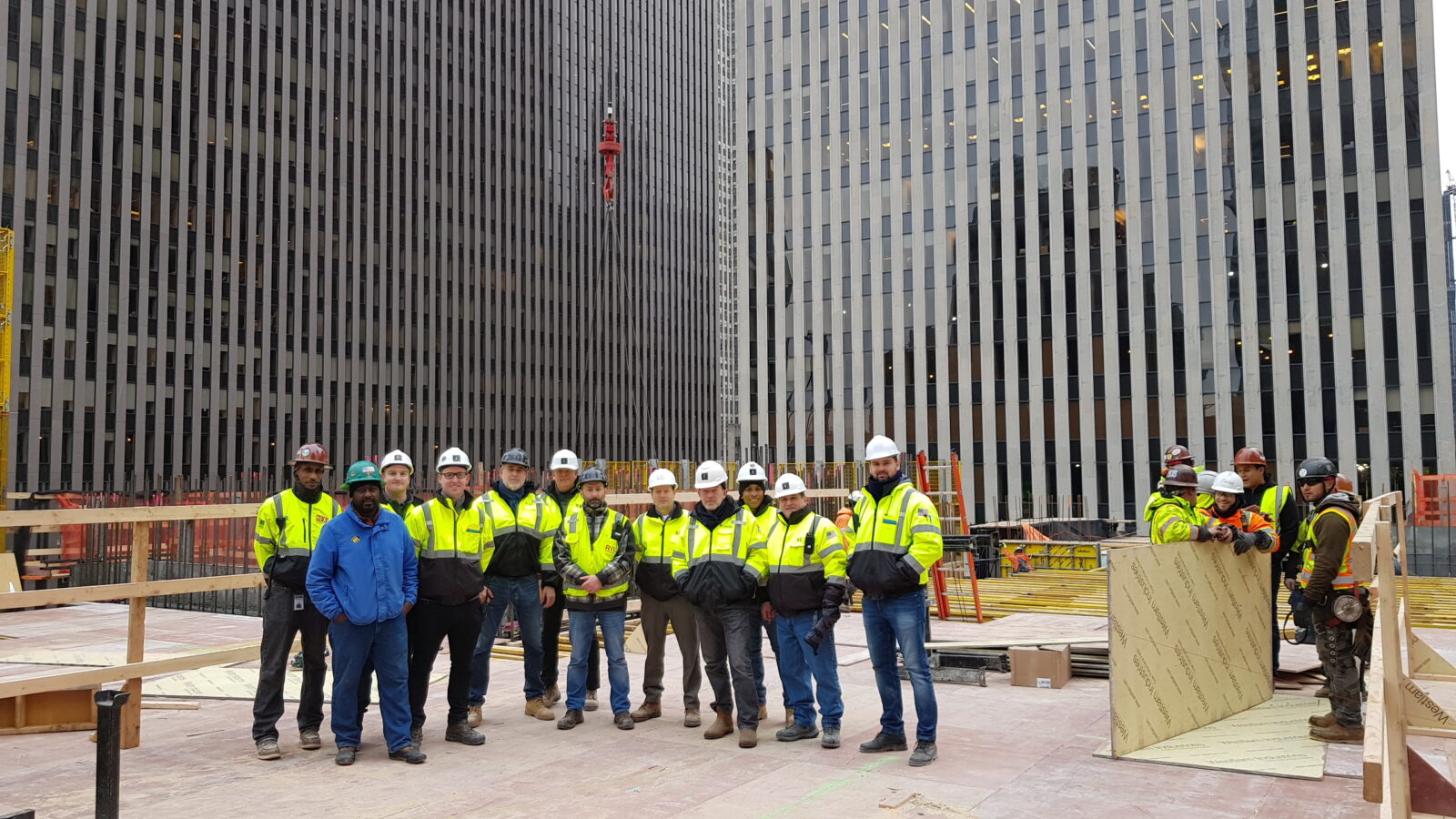
I always like to have architects, civil engineers and mechanical or electrical engineers on board, and we’ve created a really good team in America. The heads of the four zones are Vadillo in Mexico, Palmer in the United States, Amaurys in Jamaica and Carles Homs in Senegal (yes, Sanchís also supervised the construction project in Senegal in addition to his work in America). They are accompanied by great professionals like Xochitl and Israel in Mexico, or Junin Oleo in Punta Cana.
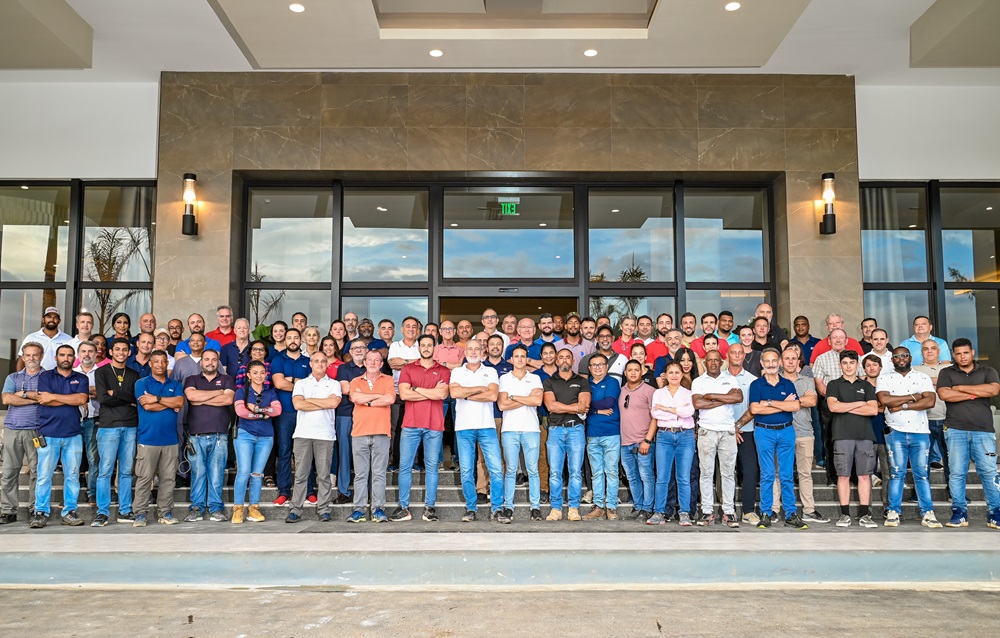
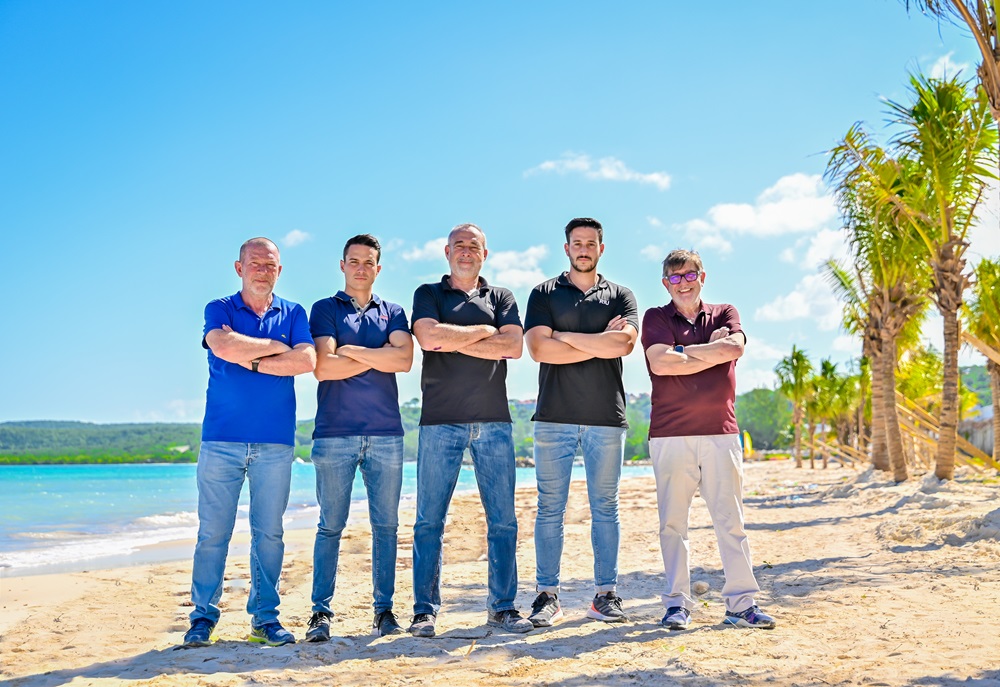
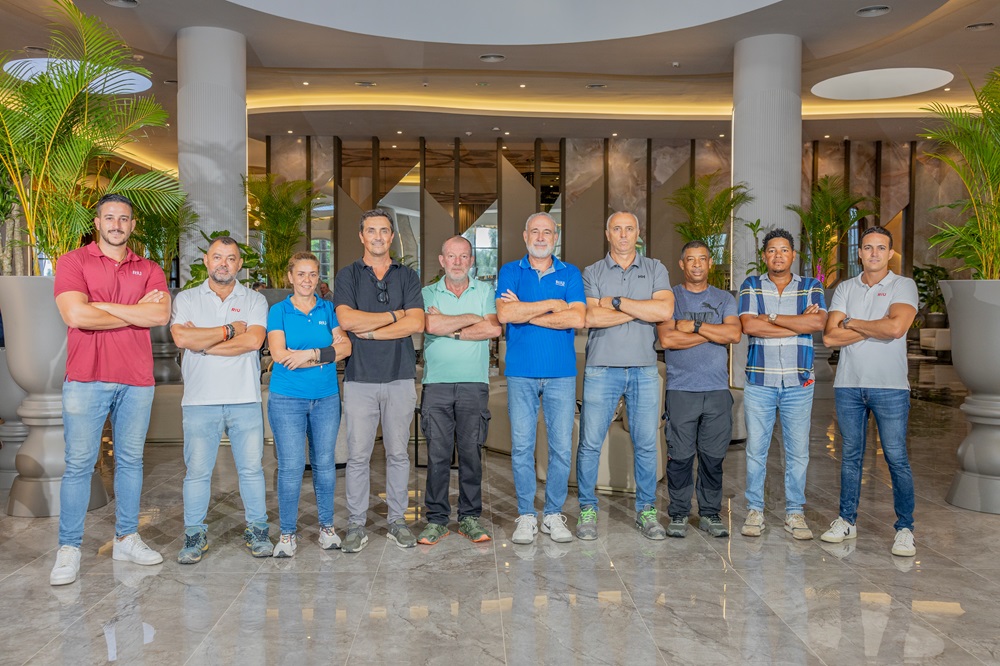
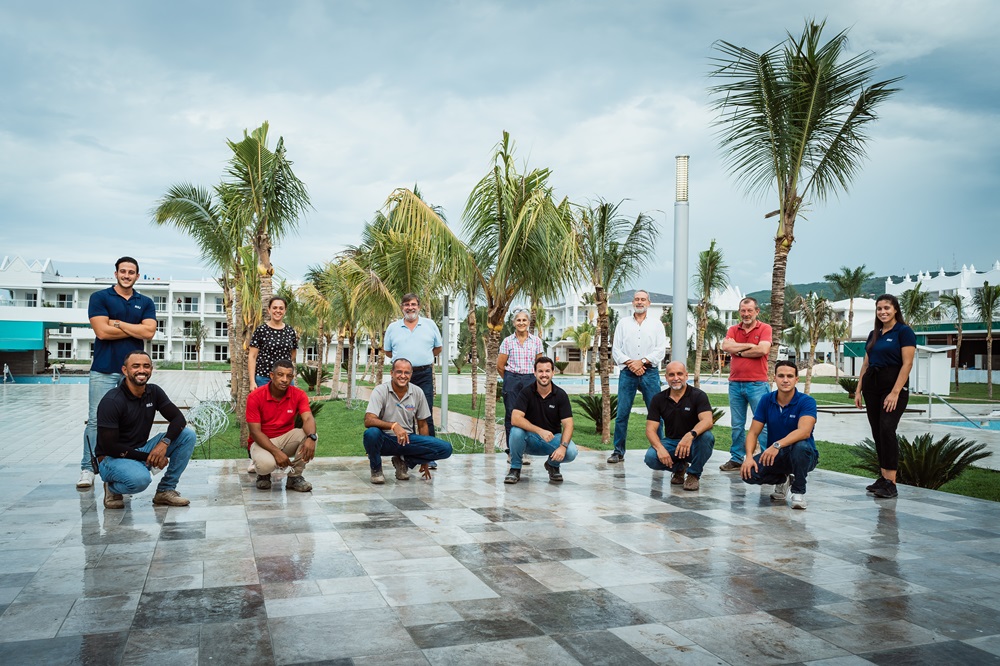
Sanchís-Luis Riu tandem: the best at solving problems
If there’s one thing I could say about Sanchís, it’s that I know everything’s in good hands when he’s working on a project. If I ask him to do something, I can be safe in the knowledge that it’ll get done. I’ve trusted him completely for many years and he’s responsible for budgets that go into the millions. At the same time, there’s no denying that he’s got a tough character. Anyone who’s met him knows what I’m talking about. I’m used to it, but even so there are still times when I tell him that he’d live longer and be happier if he didn’t get so angry. “But that’s just the way I am. I’ve not changed over the years and it’s not my work that’s made me this way. I’ve always been like that”, he says.
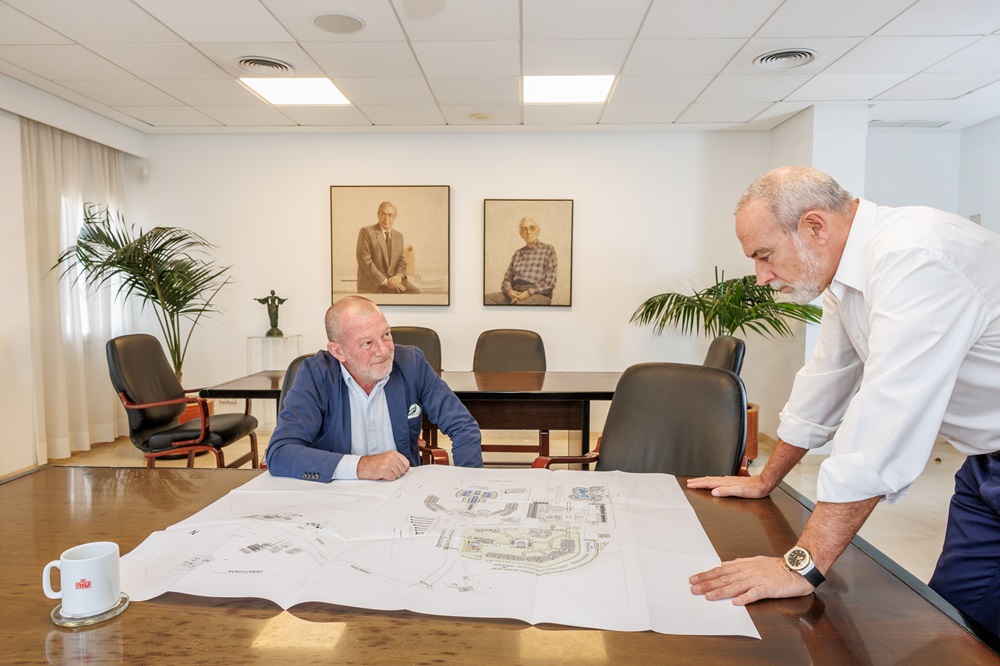
We’ve had our fair share of arguments. We both have strong opinions, experience and a lot of character. But these disagreements don’t have a negative effect on our work and we actually complement each other really well. We make decisions very quickly. “We’re very good at solving problems. We’re not ones to ponder over things for days on end. We take action. In the end, the progress of a construction project and the people working on it are more important than our squabbles”, explains Sanchís. And he’s not wrong.
“When you work with Luis, you always have to be on the lookout for the next idea he’s going to come up with. Sometimes it’s hard to believe! He thinks fast and is very demanding. I wouldn’t be the first to say that he wants everything done right away. I’m used to it now, and if he’s placed his trust in you, you have to give it your all,” says Sanchís when asked about what it’s like to work with me.
Experts say that, nowadays, most hoteliers opt for management over hotel ownership. It’s a question of finances, agility and focusing on what you do best, which in principle is managing hotels in line with your quality and service standards. I’m not saying that this isn’t true, but it’s also true that building your own hotels is a huge responsibility and keeping track of construction projects can be a source of almost daily anguish. I am one of the few hoteliers who maintain this tradition. I still firmly believe that designing and building our own hotels to expand our hotel portfolio is one of the reasons why our model is so successful. Nonetheless, I’m also fully aware that it wouldn’t be possible without someone like Sanchís, a figure in whom I have been able to fully trust for the last 33 years, heading things up on the ground.
Fdo. Luis Riu
